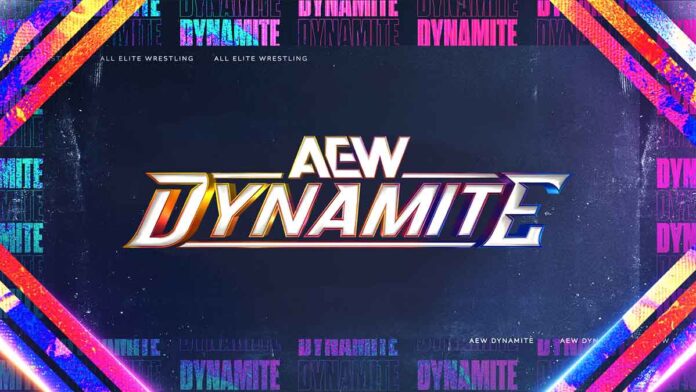
Professional wrestling, for all of its spectacle, glamour, and over-the-top nature, both inside the ring and behind the scenes, is still based on simple economics. At the end of the day, regardless of the carefully scripted angles, organic crowd reactions, scandals, or contract disputes, sports entertainment is still gauged by supply and demand, which is more or less the foundation of any form of business. You might have to take a second mortgage to get some bread and a few steaks at the grocery store, but the costs soy and tofu aren’t exactly topics for the Presidential debate stage.
Ironically, politics is more of a work than pro wrestling, and it’s more profitable, too.
Speaking of profitable, as I’ve mentioned several times before, revenue and profit are ultimately what determine the level of success in the sports entertainment industry. It’s become repetitive at this point, but given the often comical tribalism online, success for All Elite Wrestling isn’t based on the upstart league surpassing WWE, especially after the massive merger with UFC earlier this year, but rather the ability to become a stable and long-term commodity within the business.
When All Elite has success, the domino effect is that it creates more options and variety for the talent and for fans, which theoretically boosts the overall business. If you need an example of what happened when WWE was far and away the only legitimate option among the national landscape, try to sit through the tedious drek that was a completely stable product from 2015-2019. Total Nonstop Action at the time was on the brink of collapse before it was rescued from bankruptcy by Anthem Entertainment in 2016. Some of their “official” live streams were done on a staffer’s phone, it was a combination of funny and pathetic. The Roman Reigns baby face super push was a corporate agenda that completely flopped, but was forced through the chorus of boos because quite simply, if the audience in the United States was going to watch professional wrestling, they were going to watch WWE.
As we know, the launch of All Elite Wrestling created a shift in the dynamics of the industry. Despite some of the rightfully criticism of the half-hazard booking or complete mismanagement in the past few years, make no mistake about it, the existence of AEW is one of the reasons that the WWE had a boost in its business today. Cody Rhodes is the top star and a great representative for the company, which is the same that can be said about guys in that spot before him like Roman Reigns and John Cena. Cody wouldn’t have been able to return to the WWE as the American Nightmare unless he had the chance to reinvent himself in All Elite Wrestling. The platform that Tony Khan provided allowed Cody to, quite frankly, show Vince McMahon and WWE management that they were wrong when they typecast him as a mid-card comedy act. CM Punk was brought back to professional wrestling after a seven-year hiatus because of an alternative to WWE, and while Tony’s mismanagement ultimately cost the company the biggest star they had, it’s safe to say that Punk wouldn’t be in the WWE today as one of its biggest stars unless he dipped his toe back into the sports entertainment waters in AEW.
So, credit where its due, All Elite Wrestling had a measurable impact on the industry within the past five years. The biggest reason for that might also be the biggest reason that the company has drawn sluggish numbers within the past two years. Tony Khan was willing and had the resources from his billionaire family to offer comparable money to the WWE. His fandom is what motivated him to want to spark the industry and at the same time, that fandom probably puts a ceiling on the level of success AEW can achieve. Still, more talent gets a chance to make a name for themselves and make a full-time living in the pro wrestling business, which is undoubtedly a positive for the roster, and for the fans that get the opportunity to see them showcased on major stage. However, it’s more or less impossible to ignore its diminished market share, or at the very least, the amount of fans that are willing to spend money on the product.
Again, the economics of supply and demand.
When AEW launched, the novelty of a new product, and more specifically, the fans that wanted to believe an alternative to WWE after years of stale programming could get off the ground, was the draw for the organization. Tickets, especially for its early events, often sold out in minutes. Similar to anything else after the novelty worn off, All Elite had to stand or fall on its own merits. As we’ve seen, that situation has been a rather mixed bag.
Strictly by the numbers, AEW is down, as the floor for Dynamite ratings continues to decline at a meager, but steady pace. When CM Punk was a staple of the television show, the number hovered around a million on any given week. When Punk got into a brawl with The Elite and then left after he smacked around Jack Perry the following year, more or less 20% of the audience went with him. That’s not to say that he was the sole reason that 20% of the audience was there, but it’s fair to say that the backstage chaos drastically affected the perception of the company. There was a period when that 800,000 number was the base for AEW viewership after Punk was fired, but since that time, the numbers went into the 700,000 range and sometimes finish just under that around 650,000 viewers on a given week. A more than 30% decline in viewership definitely sends a message about the product. The fans were willing to support an ambitious entrepreneur that had as much passion for the sport as they did, but indulging a billionaire’s vanity project is a completely different situation.
With Cody as the top guy, CM Punk back into the fold, and Roman Reigns embraced as a top baby face after a record-setting run as a heel, it’s fair to say that the dynamics within the industry have shifted again for WWE with the momentum. That’s not to say that All Elite is doomed, but rather that there’s less of a rabid demand for the product after some of the blunders within the organization affected the perception of the company.
That’s why the news of a “done deal” for a new TV contract between Warner Brothers Discovery and AEW gives an intriguing glimpse into the future of the promotion, and more specifically, if the next move will ultimately be productive or potentially dilute the project. According to The Wrestling Observer’s Dave Meltzer, the new television contract will keep AEW on the Turner networks, maintaining its current line-up of three weekly shows. Meltzer also noted that while details aren’t certain, it’s expected that Max, the streaming service for Discovery, could potentially include AEW pay-per-views for the new deal. Depending on the business model, this could open the door for increased exposure for the AEW product, as it could bring the video library, which would include the Ring Of Honor catalog to more viewers at a cheaper price, particularly if the live pay-per-views are put on the platform, similar to the Peacock option for WWE.
On the other hand, it might be a situation where fans would have to subscribe to the Max streaming service just for the option to purchase the pay-per-view, which is what the UFC has under its current ESPN deal. I think it goes without saying that the former would yield more success than the latter, specifically based on the fact that the All Elite fan base has spent less money on the product recently. Perhaps, a cheaper bulk price would give fans a reason to follow the product on a more regular basis again. Sure, there are a core group of All Elite fans that will pay $50 for a broadcast, and that does prove that the company can still draw money, but it’s possible that more fans will subscribe at a lower product to expand the overall audience that follows and thus spends money on the product across the board.
There’s a reason that AEW ticket sales haven’t been stellar for most of their television events. Part of that is that outrageous fees and service charges that are added to the total costs, but again, if the new TV deal can provide more access to more viewers then maybe more fans will be willing to attend live shows. Meltzer also noted that the company applied for the trademark “Shock Wave,” potentially for a new show that could air on FS1. I have to say that this would be completely misguided, and hopefully, it’s a trademark that will be used for something else.
Obviously, the goal is to rebuild the base of the audience, but oversaturation is already a problem for the company. Offering the current content at a lower price is one aspect, but asking a declining audience to watch more programming seems like a very difficult tasks. In fact, while it might be worth it in the short-term monetarily, I think Rampage as the clear B-show and Collision with a minimal audience on Saturdays based on other sports competition, the argument could be made that the shows have contributed to audience fatigue so to speak. One of the reasons that many were enthusiastic about the launch of the promotion in 2019 is that it was just one show a week that didn’t require the tedious commitment of 5-7 hours of viewing content each week that the WWE had at the time. Furthermore, the concept of just Dynamite kept the supply of AEW content lower than the demand so the customer base was still there to consume the product. I’m honestly not sure how things will shake out by the time pen is put to paper, but outside of the pay-per-views at a cheaper price, I’m not sure adding more to the AEW line-up is the answer.
As much as the diehard AEW fans reject comparisons to the decline of WCW, the addition of Collision, a show that doubled not only the amount of booking required, but also the amount of live events tickets that had to be sold, seems like it had a similar effect to when Thunder was added to the Turner line-up. On the other hand, as much as the naysayers wanted to speculate that Tony wouldn’t be offered a new deal, as mentioned, AEW has an audience, and pro wrestling is still relatively cheap programming for networks with at least a somewhat consistent audience so a renewal wasn’t realistically in doubt. That being said, I’m not sure if the new TV deal, even with its rumored increase, means all that much in the grand scheme of things because there’s still oversaturation of the product, which has translated to less overall revenue for the company.
Keep in mind, it was reported that AEW lost $34 million last year. Supply and demand.
What do you think? Share your thoughts, opinions, feedback, and anything else that was raised on Twitter @PWMania and Facebook.com/PWMania.
Until next week
-Jim LaMotta
E mail [email protected] | You can follow me on Instagram, Facebook, & Threads @jimlamotta89












